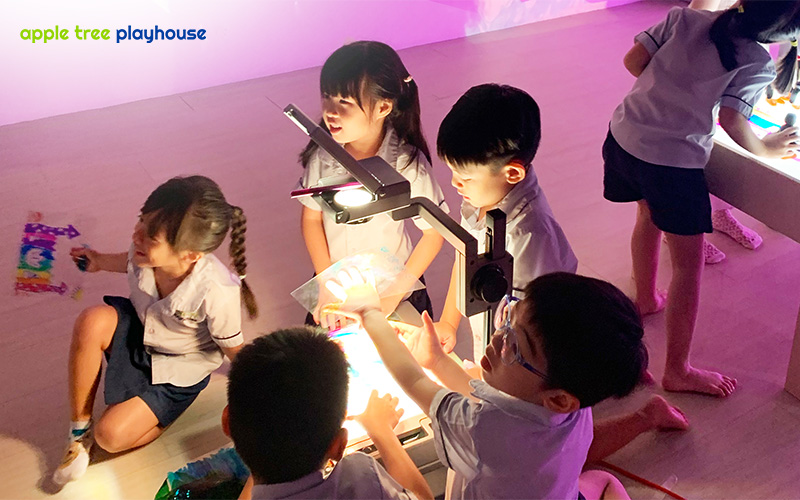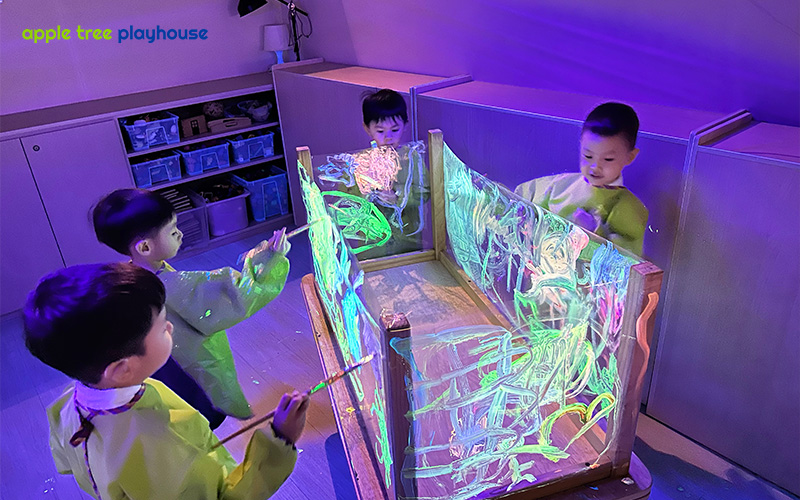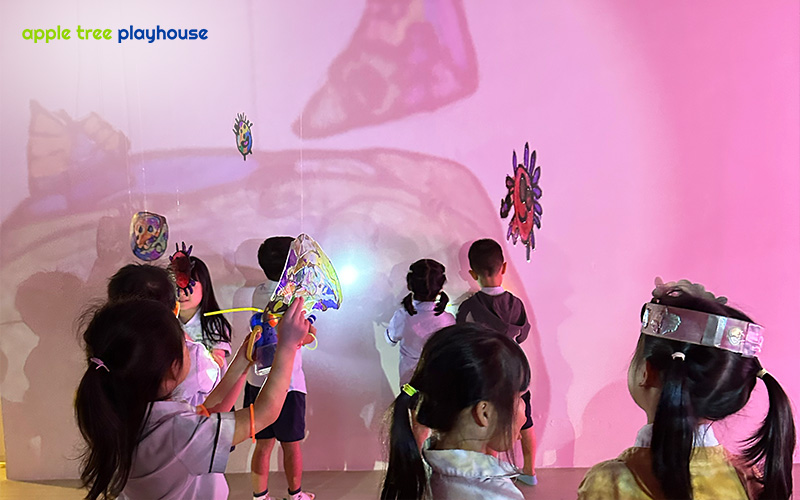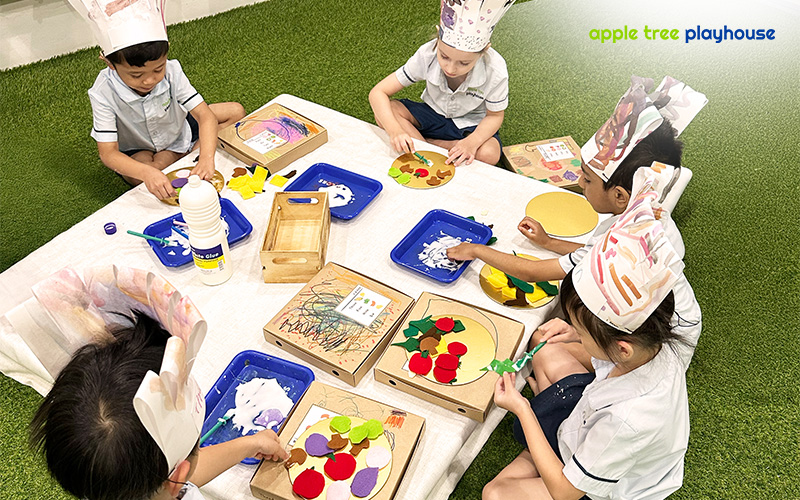As creativity and adaptability become as essential as knowledge, education must transcend traditional teaching methods and textbooks to prepare students for the future. Simultaneously, parents and educators are seeking approaches that cultivate intellectual growth and character development. Among the many child-centered learning philosophies, the Reggio Emilia approach stands out in Singapore for its emphasis on creativity, collaboration, and inquiry-based learning. By fostering curiosity and self-expression, it equips children with the ability to think independently and develop problem-solving skills that extend far beyond the classroom.
In this article, we will explore Reggio Emilia principles and how they align with holistic education in Singapore. Join us as we uncover their contributions to the next generation of innovators and critical thinkers.
Importance of Holistic Education in Early Childhood
What is Holistic Education?
More than just acquiring knowledge, education is about shaping individuals who are well-rounded to navigate the complexities of life. Holistic education embraces this philosophy by fostering intellectual development, as well as social, emotional, physical, and moral growth. By recognising children as multifaceted learners, holistic education ensures that their experiences in the classroom contribute meaningfully to their overall well-being.
The Core Elements of Holistic Education

1. Social Development
The ability to interact effectively with others is a crucial life skill. Holistic education promotes social development by encouraging collaboration, communication, and empathy. During the process, children engage in group activities, discussions, and teamwork exercises. These experiences teach them how to express their ideas, listen actively, and resolve conflicts constructively. This ultimately helps them develop meaningful relationships, preparing them for both personal and professional interactions in the future.
2. Emotional Well-being
Understanding and managing emotions is a fundamental part of personal growth. Holistic education prioritises emotional intelligence by helping children recognise and express their feelings. Through reflective practices such as journaling, mindfulness exercises, and open discussions, children gain a deeper understanding of their emotions. This will help them to build strong coping mechanisms, addressing real-life challenges with resilience and confidence.
3. Intellectual Growth
Traditional education often focuses on rote memorisation and standardised testing, but holistic education takes a different approach. It emphasises curiosity-driven learning, where children explore subjects that interest them through hands-on activities, inquiry-based projects, and real-world problem-solving. By making learning relevant and engaging, holistic education instills a passion for knowledge that extends beyond the classroom and into lifelong learning.
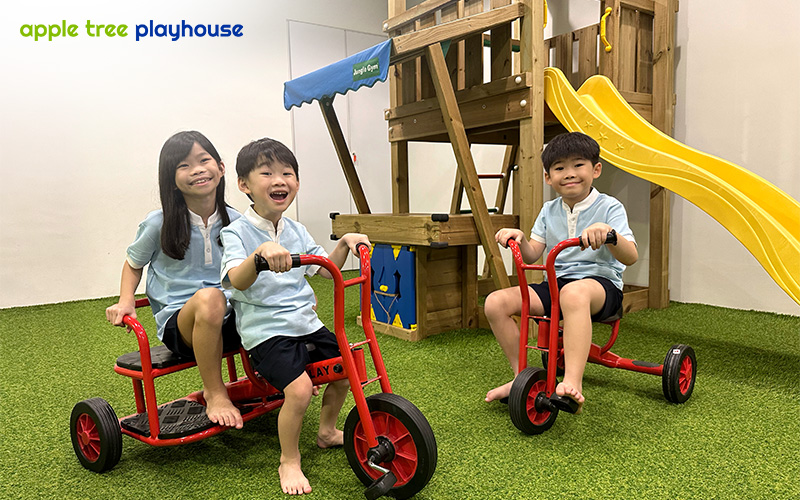
4. Physical Development
A child’s overall development is deeply influenced by their physical well-being. A healthy body supports cognitive, emotional, and social growth. Recognising the importance of physical development, holistic education integrates activities that promote both fine and gross motor skills. Activities such as sports help build endurance and cooperative skills, while dance and yoga improve flexibility, balance, and mindfulness. Through these experiences, children develop an awareness of their bodies, learn the value of an active lifestyle, and cultivate habits that contribute to lifelong health.
5. Character Building
Holistic education places a strong emphasis on moral and ethical development, playing a part in shaping a child’s character. A key component of this process is experiential learning, which helps children internalise values in a meaningful way. Rather than simply being told what is right or wrong, they actively engage with ethical concepts through storytelling, role-playing, group discussions, and real-life scenarios. Through these interactive experiences, they develop the moral compass needed to navigate real-life complexities with integrity, empathy, and a strong sense of responsibility.
The Role of Family and Educators
While holistic education provides a well-rounded foundation for a child’s growth, its success depends on the collaboration between families and educators. Early childhood development does not occur in isolation. It is shaped by their interactions, experiences, and the support systems that surround them. Parents, caregivers, and teachers serve as guiding influences, helping children build confidence, resilience, and a sense of purpose. By working together, families and educators ensure that learning extends beyond the classroom and into daily life. At the same time, the process reinforces key values and skills that contribute to a child’s holistic development.
1. Collaborative Partnership in a Child’s Development
For holistic education to be truly effective, a strong partnership between families and educators is essential. Open and consistent communication between home and school helps ensure that a child’s needs are met in a cohesive and supportive manner. When parents and teachers share insights about a child’s progress, challenges, and strengths, they can work together to create strategies that enhance learning, emotional growth, and overall well-being.
Parents can support a child’s education by engaging in meaningful discussions, facilitating hands-on learning at home and encouraging curiosity. Likewise, educators can create a classroom environment that acknowledges and incorporates each child’s background, interests, and personal experiences. The key is to make learning more relevant and engaging. This collaborative approach bridges the gap between home and school, providing children with a stable and supportive learning experience.
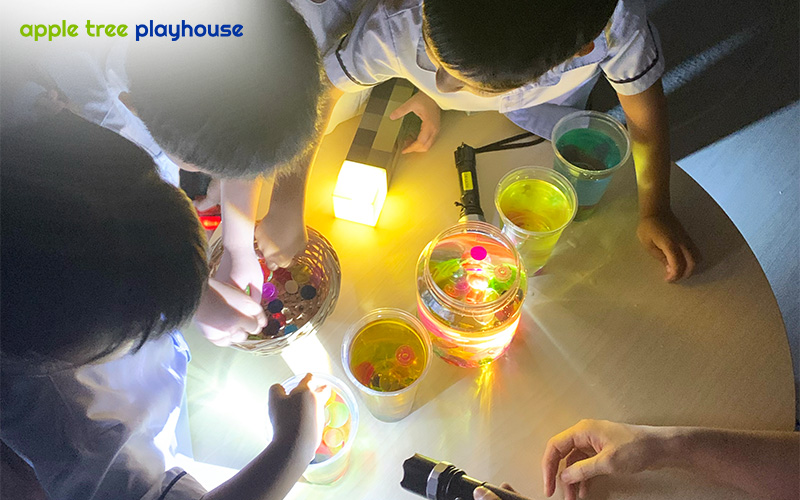
2. Providing a Safe and Nurturing Environment
Children thrive in environments where they feel safe, respected, and valued. Both families and educators play a pivotal role in creating such spaces. A nurturing atmosphere should be in place to boost children’s confidence, allowing them to express themselves freely and take risks in their learning. As such, children are able to develop self-awareness, resilience, and a positive attitude toward challenges.
At home, parents can establish a sense of security by actively listening to their children, encouraging open communication, and validating their emotions. In the classroom, teachers can promote inclusivity, encourage collaboration, and demonstrate respect for diverse perspectives. When children feel supported and understood, they are more likely to engage in learning with enthusiasm and confidence.
3. Role Modelling Values and Behaviours
Apart from direct instruction, children also learn by observing the actions and attitudes of the adults around them. Parents and educators serve as role models, shaping a child’s moral and ethical development through their everyday interactions.
For instance, when teachers encourage teamwork and conflict resolution in the classroom, they teach students the importance of cooperation and understanding. Similarly, when parents model patience and honesty at home, children learn to navigate social situations with integrity. By consistently embodying positive behaviours, adults help instil a strong sense of character in children. This shapes them into thoughtful and compassionate individuals.
4. Tailoring Support to Individual Needs
Every child is unique with distinct strengths, challenges, and learning styles. A fixed education framework does not account for the diverse ways in which children grow and develop. Families and educators recognise and address these individual needs, ensuring that each child receives the right level of support to reach their full potential.
By closely observing a child’s progress and adapting teaching methods or parenting strategies accordingly, adults can provide targeted guidance that nurtures cognitive, emotional, and social development. For instance, a child who struggles with self-confidence may benefit from encouragement and praise. Meanwhile, another who excels in creative thinking might thrive in an environment that allows for artistic expression and exploration. Personalised support ensures that children receive the right balance of challenge and reassurance, empowering them to succeed.
5. Finding the Right Educational Approach
Choosing an educational philosophy that aligns with a child’s developmental needs is vital for fostering well-rounded growth. Parents should seek an approach that not only prioritises academic learning but also nurtures emotional intelligence, social skills, creativity, and physical well-being.
In Singapore, the Reggio Emilia approach serves as an excellent example of holistic education in action. Rooted in creativity, collaboration, and inquiry-based learning, the Reggio Emilia approach encourages children to explore the world around them through hands-on experiences, self-expression, and meaningful interactions. Kindergarten in Singapore that practises this academic methodology places children at the centre of their learning journey. The process involves sparking curiosity, cultivating problem-solving abilities, and nurturing a love for discovery, shaping young learners into future innovators and critical thinkers.
The Reggio Emilia Approach in Holistic Education
Building on the foundation of creativity and exploration, the Reggio Emilia approach also emphasises the importance of collaboration and social interaction in a child’s learning journey.
In Singapore, education is not seen as an individual pursuit but as a shared experience. Children, educators, and even parents engage in meaningful dialogue and cooperative problem-solving. This approach promotes a sense of community within the learning environment to help children develop essential social skills. These include communication, teamwork, and empathy.
Cultivating Creativity and Innovation
Creativity and innovation are at the heart of the Reggio Emilia approach. Some of the preschools in Singapore encourage students to explore, express, and develop their ideas in different ways. This philosophy recognises that learning is not a one-size-fits-all process. Instead, children have unique ways of understanding and interpreting the world around them.
1. Emphasising the “100 Languages” of Learning
Among the defining principles of the Reggio Emilia approach is the “100 Languages” concept. It is an idea that children communicate and express themselves through countless different mediums. These “languages” include visual arts, music, movement, storytelling, dramatic play, construction, and even modern tools. Compared to traditional academic methods that limit children’s potential, this approach enables them to explore their thoughts and emotions in ways that resonate with them personally.
For instance, a child who struggles to express an idea verbally might find clarity through drawing, sculpting, or dramatic play. By providing a variety of creative outlets, the Reggio Emilia approach in Singapore encourages children to engage with learning in a way that suits their unique strengths and preferences. More importantly, this focus on diverse expression fosters problem-solving skills, self-confidence, and a lifelong passion for creative exploration.
2. Creating an Environment That Inspires Creativity
In the Reggio Emilia philosophy, the learning environment is considered the “third teacher”. The element is vital in shaping a child’s experiences and curiosity. Classrooms are intentionally designed to be open, inviting, and rich with materials that spark imagination and discovery. Unlike conventional classroom settings, where materials are often standardised and structured, Reggio Emilia spaces in Singapore’s preschools feature a variety of open-ended resources, such as:
- Natural materials like leaves, twigs, shells, and stones to inspire sensory exploration.
- Recycled objects such as cardboard, fabric scraps, and bottle caps to encourage creative problem-solving and sustainability.
- Loose parts like blocks, beads, and wire that allow children to build, design, and experiment freely.
By establishing creative learning environments that promote hands-on engagement, children are naturally drawn into the discovery process. Every aspect of the classroom is thoughtfully designed to stimulate curiosity and inspire creativity. This covers the arrangement of materials, the presence of natural light, and the setup of collaborative spaces.
3. Encouraging Exploration and Inquiry-Based Learning
Children are natural explorers, constantly questioning and experimenting with the world around them. The Reggio Emilia approach builds on this innate curiosity through inquiry-based learning, where children take an active role in their education. Instead of following a rigid curriculum, learning is guided by children’s interests. Meanwhile, teachers act as facilitators rather than instructors.
Imagine a group of children becomes fascinated by shadows. The teacher may encourage them to observe how shadows change throughout the day, create shadow art, or use storytelling to explore the concept further. This type of learning encourages children to ask questions, test ideas, and discover solutions. It is a process that mirrors the scientific method and nurtures a deep love for learning.
4. Celebrating Process Over Product
One of the most distinctive aspects of the Reggio Emilia approach is its emphasis on the journey of learning rather than the final outcome. This differs from traditional education models adopted in some preschools in Singapore. Rather than focusing on standardised results, this approach values the process of exploration, experimentation, and self-expression.
Children are encouraged to take risks, make mistakes, and embrace imperfection as a part of growth. Whether they are painting, building structures, or composing music, the emphasis is placed on reflection, discussion, and revision, rather than achieving a “perfect” final product.
For example, if children are working on a sculpture, they are invited to discuss their ideas, explore different materials, and modify their design based on new discoveries. This approach fosters resilience and adaptability, helping children develop a mindset where learning is seen as an ongoing process rather than a fixed goal.
Fostering Collaboration and Social Intelligence
Building on the foundation of creativity and exploration, the Reggio Emilia approach also prioritises collaboration and social intelligence. It recognises that learning is a social process, where children construct knowledge through meaningful interactions with peers and adults. Through collaborative experiences, they learn to respect differing perspectives, develop empathy, and refine their problem-solving abilities. This emphasis on cooperation prepares children to navigate the complexities of teamwork and communication in the real world.
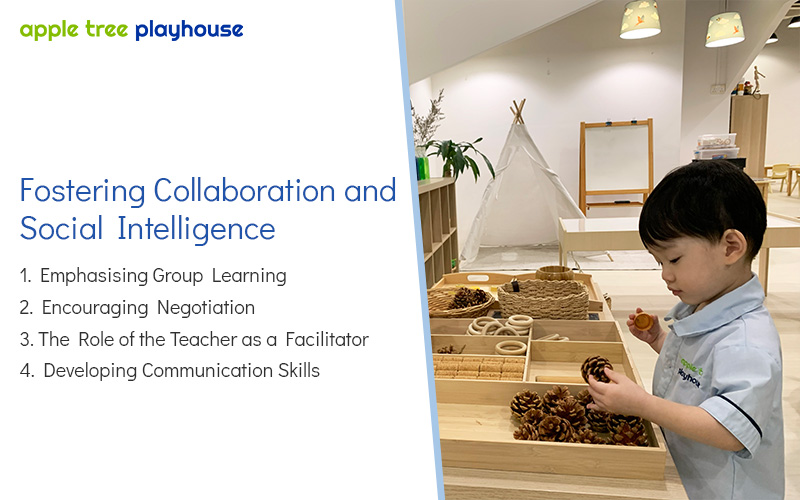
1. Emphasising Group Learning
The Reggio Emilia approach values collaboration, making group learning a key part in the classroom experience. In Singapore’s kindergartens that practise this approach, children are given the opportunities to engage in long-term projects and collective problem-solving activities. During the process, they learn to exchange ideas, assess different viewpoints, and build upon each other’s knowledge.
Group learning also fosters a sense of community, where children understand that their ideas and contributions matter. By actively participating in discussions and collaborative projects, they develop confidence in their ability to engage with others, articulating their thoughts and solving problems together.
2. Encouraging Negotiation
Conflict is a natural part of social interaction. In Reggio Emilia classrooms, children are encouraged to navigate disagreements independently through guided negotiation. Rather than intervening immediately, educators act as facilitators, helping children express their emotions, understand different perspectives, and work toward resolutions.
A possible scenario can be two children disagreeing over who gets to use a toy. The teacher might prompt a discussion where both children express their feelings and reasoning. Through this process, children learn essential conflict-resolution skills like active listening. This means they can become more adept at handling disagreements, developing resilience that will serve them well in the future.
3. The Role of the Teacher as a Facilitator
In the Reggio Emilia approach, teachers do not simply deliver information but also act as facilitators of collaboration. Their role is to create opportunities for children to interact, exchange ideas, and solve problems together. Educators observe children’s interests and design activities that encourage teamwork and communication. This keeps learning child-led and inquiry-driven. Instead of providing direct answers, they ask open-ended questions like:
- “What do you think will happen if we try this?”
- “How can we solve this problem together?”
- “What do you notice about your friend’s idea?”
When children are encouraged to reflect, brainstorm, and work collaboratively, teachers help them develop independence in thinking and decision-making. This ultimately boosts their confidence in leveraging their abilities to learn and contribute.
4. Developing Communication Skills
Effective communication is one of the determinants for personal and professional success. From an early age, the Reggio Emilia approach supports the development of strong verbal and non-verbal communication skills. Through storytelling, discussions, and group activities, children practise expressing their thoughts clearly, listening attentively, and engaging in meaningful conversations.
In a Reggio Emilia classroom in Singapore, children might:
- Engage in group discussions about a shared experience, such as a nature walk or science experiment.
- Create and perform stories through role-playing, enhancing both verbal and non-verbal communication.
- Participate in collaborative art projects, where they must express ideas and make creative decisions as a team.
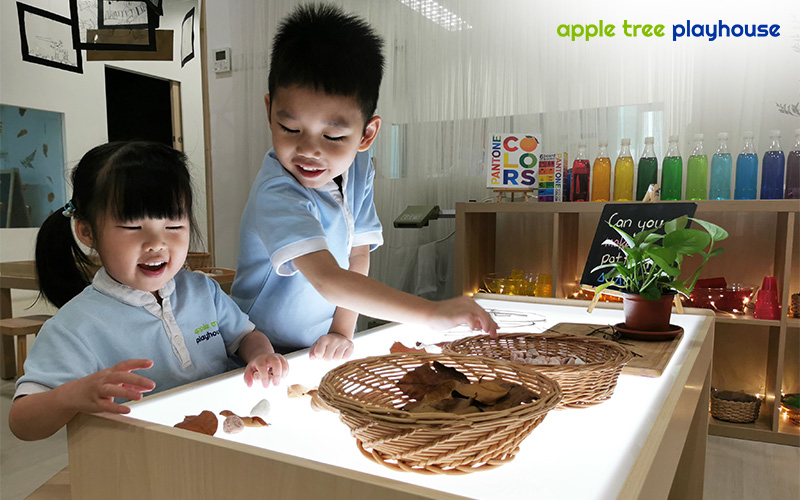
Equipping Children with Real-World Problem-Solving Skills
As the world continues to evolve, the ability to navigate challenges with creativity and critical thinking is invaluable. The Reggio Emilia approach cultivates these skills by making problem-solving a natural part of learning. Instead of relying on rigid instruction, it encourages children to explore, experiment, and collaborate. The approach hones the following skills to transform learning into an engaging and meaningful experience.
1. Critical Thinking and Decision-Making
One key aspect of problem-solving is the ability to analyse situations, consider different perspectives, and make informed decisions. The Reggio Emilia approach gives Singapore’s preschool children active roles in their learning. Young learners are empowered to make choices about their projects, materials, and approaches to problem-solving.
Illustrations:
- If a group of children is constructing a bridge out of recycled materials, they must decide which materials to use, test their strength, and refine their design based on trial and error.
- If they are creating a garden, they must think about which plants will grow best in their environment and develop strategies for taking care of them.
2. Real-Life Connections and Learning
Children learn best when their education is relevant and connected to the real world. In the Reggio Emilia approach, problem-solving is not confined to the classroom but extends into the community as well.
Illustrations:
- Field trips to museums, parks, and cultural sites allow children to engage with real-world environments.
- Community projects, such as designing a small garden for a local space, support children in applying their learning.
- Interactions with experts, such as artists, scientists, or local business owners, inspire children to delve into real-world professions.
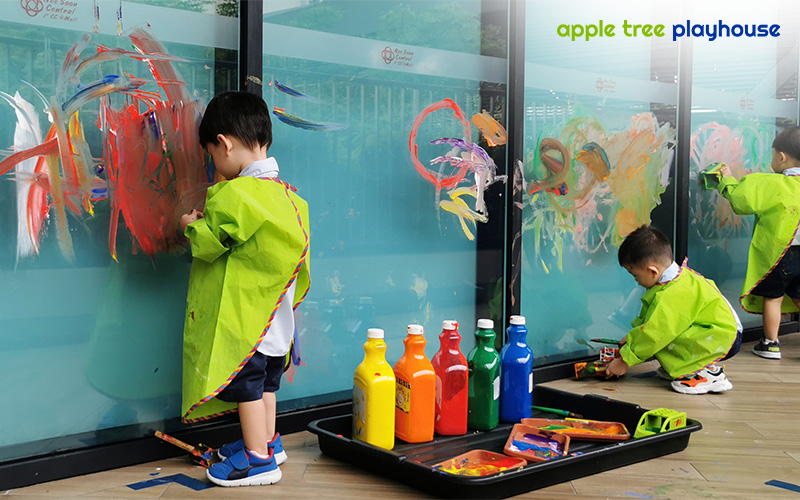
3. Fostering a Growth Mindset
In the Reggio Emilia philosophy, challenges are not seen as obstacles but as opportunities for growth. In other words, children are not criticised for making mistakes. Instead, they are encouraged to experiment with new ideas and find solutions persistently, developing resilience and perseverance as an outcome.
Illustrations:
- Encouraging children to reflect on their mistakes and try different approaches. Instead of focusing on “right” or “wrong” answers, they guide children in exploring multiple solutions.
- Providing open-ended challenges that encourage children to problem-solve creatively without fear of failure.
- Using positive reinforcement to celebrate effort and progress, reinforcing the idea that learning is an ongoing journey.
4. Integration of Technology and Tools
Incorporating technology and hands-on tools into learning experiences is essential. The deployment allows children to experiment, document their findings, and develop digital literacy. To achieve these, the Reggio Emilia approach integrates the use of technology as an active part of exploration and problem-solving.
Illustrations:
- Children use tablets to document project progress, take pictures, and record observations during outdoor explorations.
- Children express their creativity and ideas through digital art creation.
- Children engage with coding activities to promote logical thinking and computational problem-solving.
- Children deploy building tools, measuring instruments, and science kits to experiment with physical and engineering concepts.
Preparing Children for a Future of Innovation
By embedding problem-solving, critical thinking, and creativity into daily learning experiences, the Reggio Emilia approach prepares children in Singapore for an evolving world. Whether they are working through scientific experiments or collaborating on group projects, children will be well-equipped to navigate the complexities of the future.
Frequently Asked Questions
1. How can parents get involved in the Reggio Emilia approach at home?
Parents can support the Reggio Emilia approach by fostering an environment at home that values curiosity, exploration, and creativity. Simple activities like engaging in open-ended conversations, providing materials for creative play, and encouraging children to explore their interests can help reinforce the principles of the approach. Communication between parents and teachers is also key in ensuring a child’s learning experience is consistent and meaningful across both home and school.
2. How is the Reggio Emilia approach different from traditional education methods?
The Reggio Emilia approach focuses on child-led learning, where children explore their own interests and ask questions to guide their learning. Unlike traditional education, which is often teacher-directed, the Reggio Emilia approach values the role of the environment as a “third teacher” and encourages creativity, collaboration, and real-world problem-solving.
3. How can holistic education be tailored to meet the needs of each child?
Holistic education can be tailored to meet each child’s needs by recognising their individual strengths, interests, and learning styles. Educators can adapt teaching methods, provide personalised learning experiences, and create a flexible environment that encourages exploration and growth. By observing each child’s progress and offering support, teachers can ensure that every child receives the attention and resources they need to thrive.
Conclusion
The Reggio Emilia approach embodies the essence of holistic education in Singapore, treating children as active participants in their learning. By encouraging exploration, self-expression, collaboration, and inquiry-based learning, this approach nurtures a love for discovery that lasts a lifetime. Childcare in Singapore that promotes the Reggio Emilia principle equips children with essential skills to achieve academic success and navigate real-life challenges.
As parents and educators, creating environments that inspire curiosity, celebrate creativity, and support each child’s unique growth journey. By embracing the Reggio Emilia philosophy, children are educated to approach life with resilience, empathy, and a passion for learning.
As a leading preschool in Yishun, Apple Tree Playhouse is committed to nurturing the whole child and supporting every aspect of their development. Through engaging, child-centered learning experiences, we help children build the foundation they need for a bright and fulfilling future.
If you are looking for quality childcare in Yishun, contact us and learn more about our academic approach.

